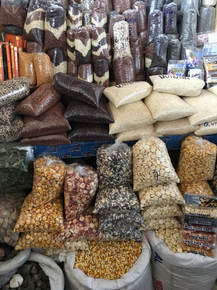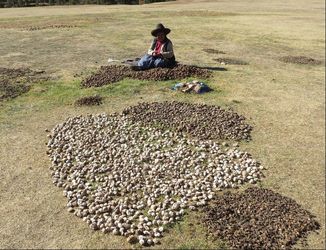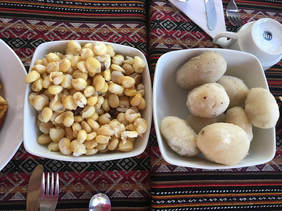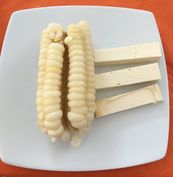 Quinoa and corn in the San Pedro market, Cusco.
Quinoa and corn in the San Pedro market, Cusco. I didn’t know much about Peruvian food before our trip but I soon found out it’s delicious. Quinoa, corn and potatoes are staples, although according to our guide quinoa has only become trendy in recent years. It's gluten-free, packed with protein and lends itself to all kinds of recipes. We had quinoa for breakfast, for lunch (in fresh-tasting salads) and for dinner in soups, quinottos (a quinoa risotto) and side dishes. Stalls in the San Pedro market in Cusco are stocked with varieties of quinoa. Because it grows well in the cold and tolerates fairly poor soils, the Inca people grew quinoa on their higher terraces, along with potatoes, while corn was grown at lower elevations.
 Quechuan woman drying her potatoes in the sun.
Quechuan woman drying her potatoes in the sun.  Corn and moraya potatoes.
Corn and moraya potatoes.  Corn with cheese.
Corn with cheese.  RSS Feed
RSS Feed
